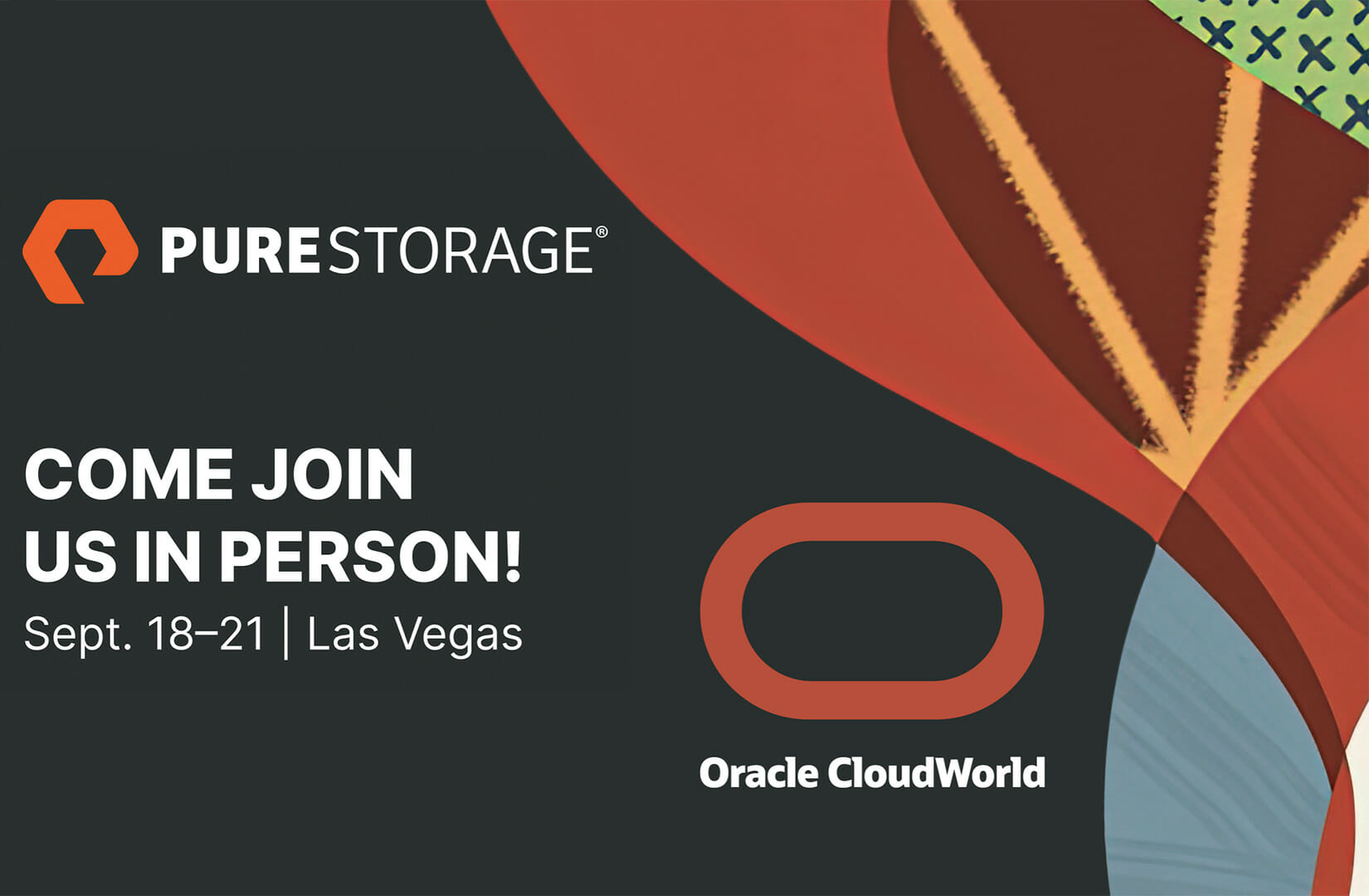As I started preparing for Oracle CloudWorld 2023, it made me think of one of the questions that I’m frequently asked: “Why is a storage vendor attending a database event?” The next most frequently asked question I’ve gotten during my seven years at Pure is: “Why would a database expert join Pure Storage?”
The storage-database connection isn’t obvious to everyone. But they are, in fact, a perfect match.

Applications and Databases
Simplify management, boost performance, and dramatically
cut costs
A Brief History of Databases
The best way to explain it is to look at how and why databases were invented. Databases came about in the 1960s as a way to organize data in a meaningful way. At the time, most data was stored on tape drives using navigational databases. Navigational databases and tape drives were an improvement, but they had issues retrieving data. Due to the navigational nature of tape and the fact that they only stored the data location of the record rather than an index with pointers to the data as we do today, they had to read all of the records to report on data.
In addition, all records had to be updated every time data was moved from one piece of media to another. Last but not least, the same data was stored many times in different places. That meant you were reading and writing the same data over and over again.
Fortunately, in the 1970s, computer scientist Edgar Codd invented relational databases, where data was normalized, reducing the amount of duplicate data that was written. He published A Relational Model of Data for Large Shared Data Banks, which discussed how this problem could be solved with the addition of indexes and structures. These structures could be spread across multiple disks allowing data to be efficiently moved, updated, and searched, and disks to simultaneously service data requests.
This gets even more interesting when you consider where Edgar Codd worked. He was in the hard drive division of IBM. A storage guy, solving database problems.
And who was one of the first database vendors to embrace this new model? Oracle.
From Then to Now: How Modern Storage Solves Modern Database Challenges
Fast forward 50 years and problems of efficiently storing and servicing data requests are still some of the big challenges we face today, along with a new set of challenges. With the explosive data growth most organizations are experiencing, data sets are getting larger and larger. Challenges with how we store and retrieve that data are bigger than ever and affect both management and scalability. Protecting business-critical data from loss, especially ransomware events, is top of mind for data professionals these days. Rapid recovery is more challenging with larger data sets.
Additionally, many organizations are adopting modern application development practices with containers and Kubernetes as the orchestration platform. Containers can be spun up quickly, but what does it take to move a data set into a container and protect it? More importantly, organizations need storage platforms that can provide cost savings, reduce power consumption, and optimize space in their data centers.
Databases Run Better on Flash
At Pure Storage, we believe there’s a better way to store and retrieve data while also maximizing value from this data: the transition from hard drives to flash media. We do not believe retrofitting legacy storage devices with flash media is the answer.
We embrace the same ideals that Edgar Codd and Oracle also embraced. And we’re not just another storage vendor.
Pure Storage® FlashArray™ is efficiently designed to consume up to 85% less energy and occupy up to five times less space. Coupled with industry-leading data reduction technology, it provides an optimal solution for your growing Oracle environment. Our all-flash architecture has a consistent performance profile with five to ten times performance improvements with lower latency and three to five times better throughput for transactional and analytical workloads.
Companies can accelerate their digital transformation with Portworx®, the most complete Kubernetes data services platform. Portworx delivers built-in high availability, data protection, data security, and hybrid-cloud mobility. The Pure Storage Evergreen® subscription portfolio offers unequaled choice and flexibility in how you purchase and consume storage—all based on the proven, non-disruptive Evergreen architecture.
Want to learn more? Schedule a meeting with one of our Oracle experts or attend our session at Oracle CloudWorld and hear our Ace Director, Ron Ekins, speak about how storage snapshots play a critical role in getting the most out of an Oracle environment. The session will cover specific use cases around decreasing backup/restore times, ransomware protection, speeding up development cycles, scaling business applications faster, and much much more.
Learn more about Pure Storage solutions for Oracle.







